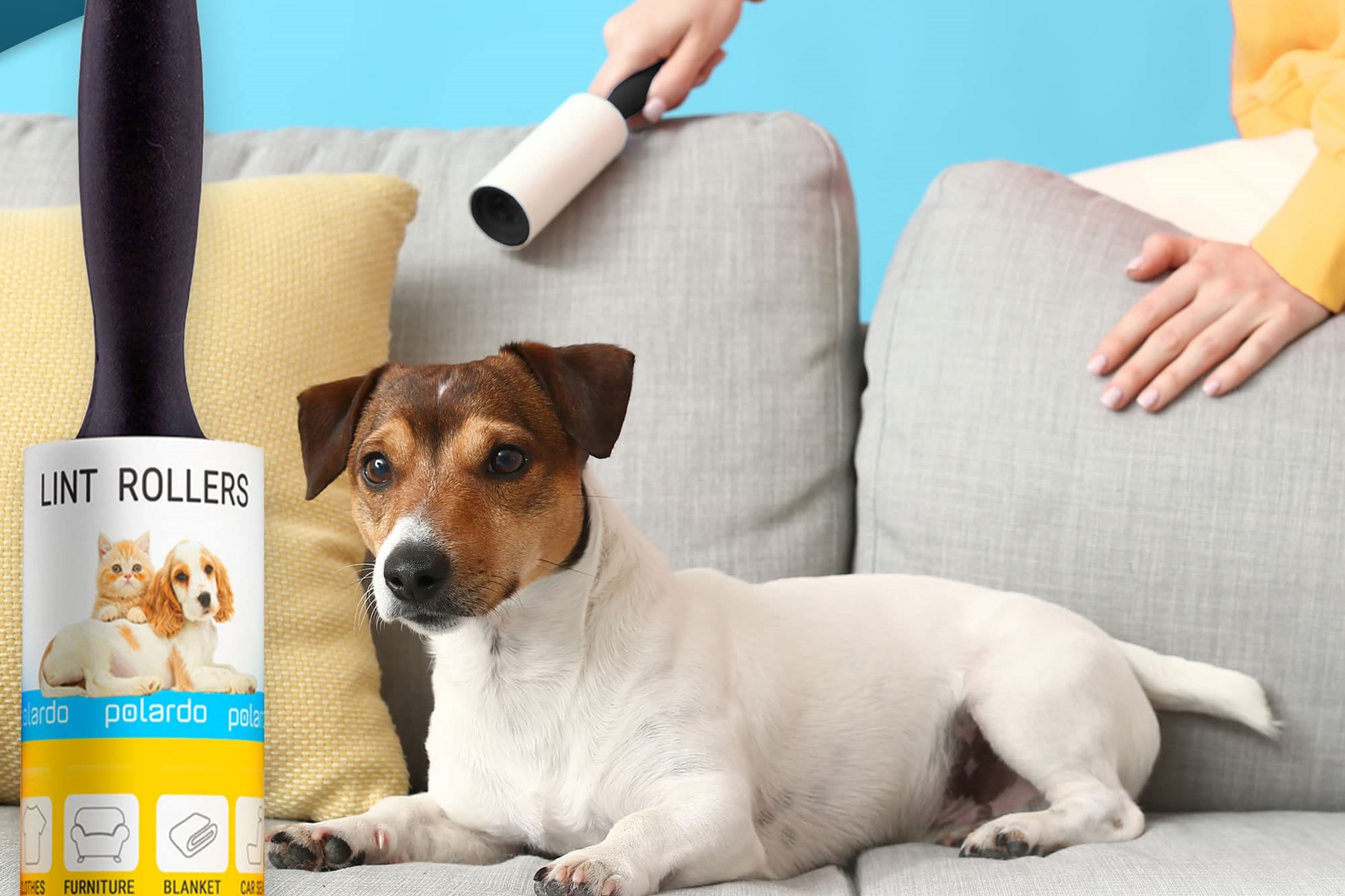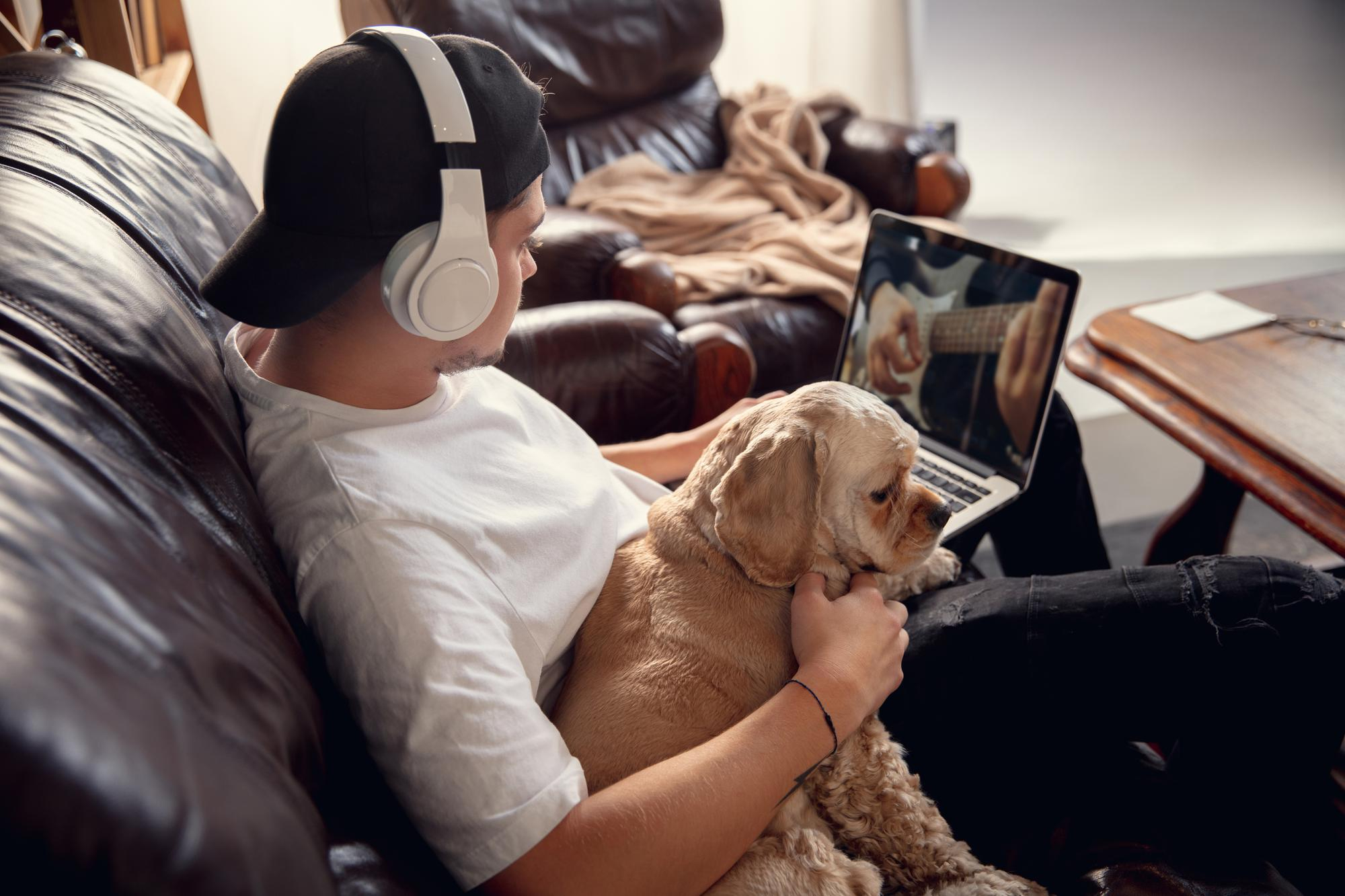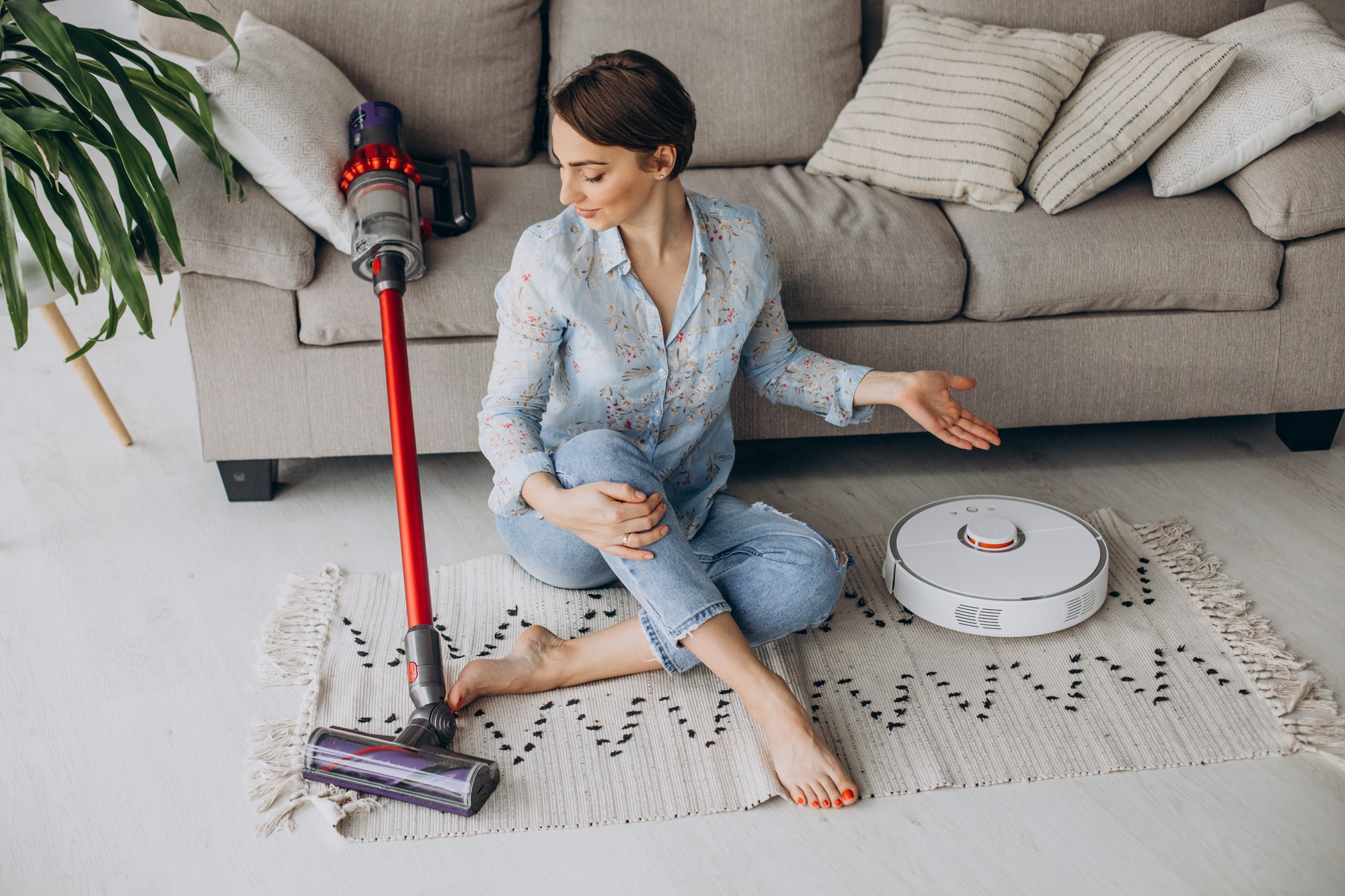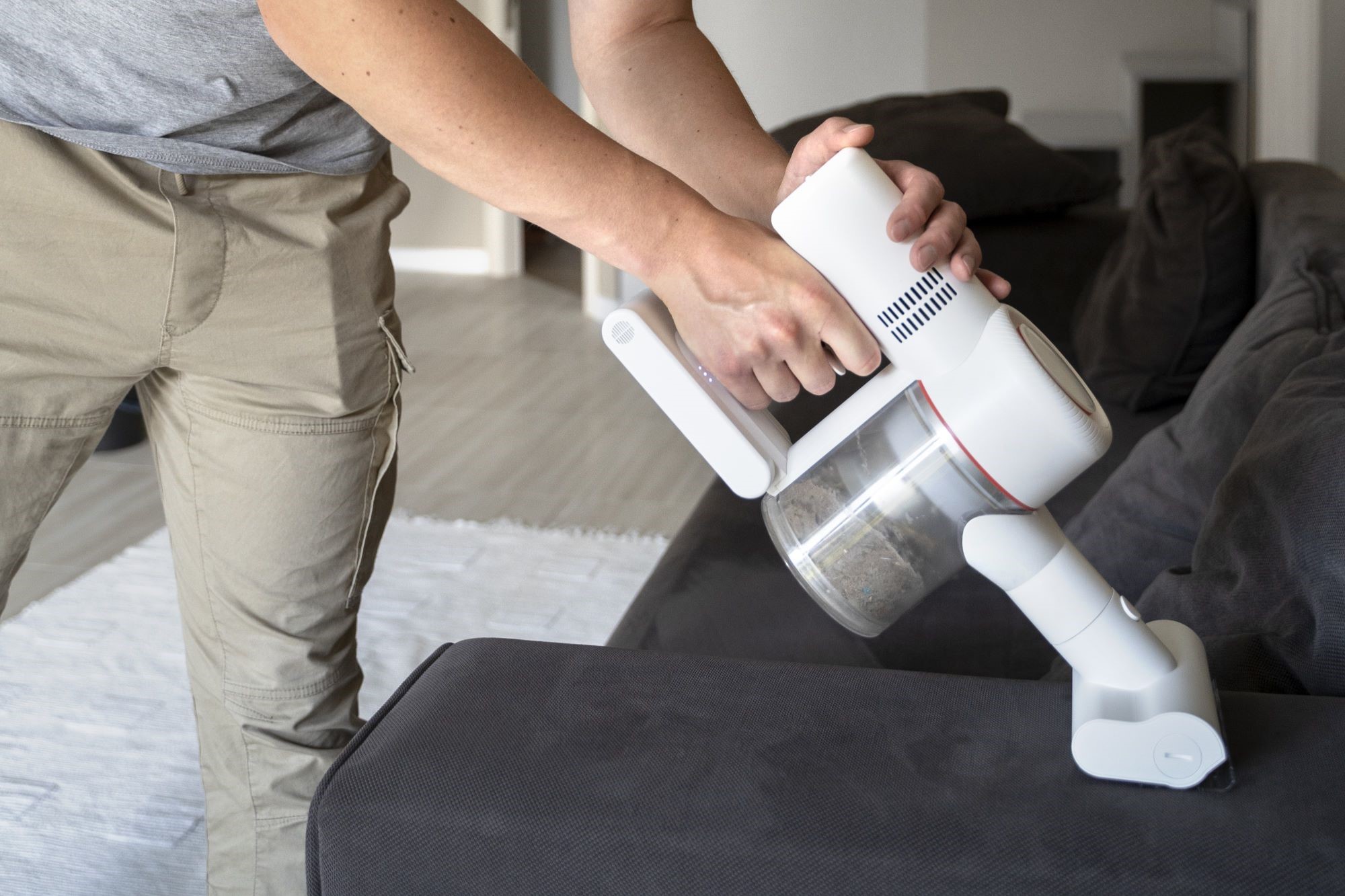If you’ve ever found yourself in a constant struggle with dog hair on your furniture, you’re not alone. Dog owners know the challenge all too well: fur everywhere! From the couch to the armchair, dog hair seems to find its way into every nook and cranny of our homes. But fear not—there are numerous tools designed specifically to tackle this issue. In this comprehensive guide, we’ll delve into the best tools for removing dog hair from furniture, detailing their functionality, advantages, and limitations. We’ll also provide tips on how to use them effectively to keep your home clean and fur-free.
Why Dog Hair Can Be a Challenge
Before diving into the tools, it’s essential to understand why dog hair is such a pervasive problem. Dog hair has a unique tendency to cling to various surfaces, thanks to its fine texture and natural oils. This clinginess is particularly troublesome on upholstered furniture, where the fibers of the fabric can trap and hold onto the hair. Additionally, the lightweight nature of dog hair means it can easily become airborne, settling on surfaces throughout your home.
Understanding the Science of Pet Hair
Dog hair, like many pet hairs, has microscopic barbs that help it cling to surfaces. These barbs are what make hair so difficult to remove. Combined with the oils that are naturally present in a dog’s fur, it creates a sticky effect that causes hair to embed itself deeply into upholstery.
Types of Furniture Fabrics and Their Interaction with Pet Hair
Different types of furniture fabrics interact with pet hair in various ways. For instance:
- Velvet and Suede: These fabrics are particularly prone to trapping pet hair because their fibers are dense and can easily hold onto hair.
- Leather: Leather is less likely to trap pet hair but can still show visible hair if not cleaned regularly.
- Microfiber: Microfiber is often easier to clean but can still hold onto hair, especially if the hair gets worked into the fibers.
Essential Tools for Removing Dog Hair
In the battle against dog hair, having the right tools is crucial. Here’s a detailed look at some of the most effective tools for removing dog hair from furniture.
1. Lint Rollers
How They Work
Lint rollers are a popular tool for removing dog hair. They consist of a handle and a roll of sticky paper. As you roll the adhesive sheet over your furniture, it picks up dog hair and other debris.
Pros and Cons
| Pros | Cons |
| Quick and convenient: Ideal for immediate cleanups. | Sticky sheets can be wasteful: The sheets are disposable and need replacing. |
| Portable and inexpensive: Easy to carry around and doesn’t break the bank. | Not ideal for large areas: Less effective for covering extensive surface areas. |
| Great for quick touch-ups: Perfect for minor hair accumulations. |
Usage Tips
- Roll in Multiple Directions: To ensure you capture all the hair, roll the lint roller in several directions. This technique helps cover more ground and pick up hair that might be missed by rolling in just one direction.
- Replace Sheets as Needed: When the sticky sheet becomes covered in hair, it’s less effective. Keep an eye on it and replace it as needed to maintain effectiveness.
2. Rubber Brushes
How They Work
Rubber brushes are equipped with rubber bristles that attract and lift dog hair from various surfaces. The rubber material creates friction that helps to loosen hair and pull it away from the fabric.
Pros and Cons
| Pros | Cons |
| Effective on Various Surfaces: Works well on different types of upholstery. | Requires a Bit of Elbow Grease: Might need more effort compared to other tools. |
| Reusable and Easy to Clean: Can be washed and used multiple times. | May Not Be Effective on Very Fine Fabrics: Can struggle with extremely fine fabrics. |
| Good for Both Short and Long Hair: Versatile for different types of pet hair. |
Usage Tips
- Use Sweeping Motions: To effectively gather the hair, use the brush in sweeping motions. This will help aggregate the hair into manageable piles.
- Rinse the Brush Regularly: After collecting hair, rinse the brush under water to remove the collected hair and prevent buildup.
3. Vacuum Cleaners with Pet Hair Attachments
How They Work
Many modern vacuum cleaners come with specialized attachments designed specifically for pet hair. These attachments typically feature brushes or beater bars that agitate the fabric, lifting hair from the upholstery.
Pros and Cons
| Pros | Cons |
| Powerful and Efficient: Can handle large areas quickly and effectively. | Can Be Bulky: The vacuum cleaner might be cumbersome to use on small or delicate items. |
| Covers Large Areas Quickly: Ideal for cleaning multiple pieces of furniture in one go. | Higher Upfront Cost: Generally more expensive than other tools. |
| Often Includes Other Useful Attachments: Can be used for a variety of cleaning tasks beyond pet hair. |
Usage Tips
- Use the Pet Hair Attachment Regularly: To prevent hair from accumulating, make sure to use the pet hair attachment frequently. This will help manage hair before it becomes a bigger problem.
- Empty the Dustbin Frequently: A full dustbin can reduce suction power. Empty it regularly to maintain optimal performance.
4. Upholstery Brushes
How They Work
Upholstery brushes are designed specifically for cleaning furniture. They typically have softer bristles compared to other brushes and are intended to agitate and loosen pet hair from the fabric.
Pros and Cons
| Pros | Cons |
| Gentle on Delicate Fabrics: Ideal for cleaning sensitive upholstery without damage. | May Need to Be Used with Other Tools: Might not be sufficient on its own for stubborn hair. |
| Maintains Fabric Texture: Helps to keep the fabric looking good while cleaning. | Less Effective on Stubborn Hair: Can struggle with more ingrained hair. |
| Usable on Various Upholstery Types: Versatile for different types of furniture. |
Usage Tips
- Brush in Consistent Directions: To lift hair more effectively, brush in a consistent direction and avoid changing angles too frequently.
- Combine with a Vacuum: For the best results, use the upholstery brush in conjunction with a vacuum cleaner.
5. Sticky Sheets or Rollers
How They Work
Sticky sheets or rollers are designed with adhesive surfaces that pick up dog hair from furniture. They are similar to lint rollers but come in various shapes and sizes.
Pros and Cons
| Pros | Cons |
| Convenient and Disposable: Easy to use and replace. | Can Be Expensive Over Time: Continual purchase of sticky sheets can add up. |
| Effective for Quick Cleanups: Good for immediate hair removal. | Not Environmentally Friendly: Disposable nature is less sustainable. |
| Comes in Various Sizes: Suitable for different cleaning needs. |
Usage Tips
- Use in Conjunction with Other Tools: For a more thorough cleaning, use sticky sheets or rollers along with other cleaning methods.
- Keep Extra Sheets Handy: For larger cleanups, having extra sheets available can be helpful.
6. Pet Hair Removal Gloves
How They Work
Pet hair removal gloves are designed with textured or rubber surfaces that help gather and lift pet hair from furniture. They can also be used for pet grooming.
Pros and Cons
| Pros | Cons |
| Dual Purpose: Can be used for both pet grooming and cleaning furniture. | Effectiveness Can Vary Based on Glove Design: Some gloves may not work as well as others. |
| Easy to Use and Clean: Simple to put on and clean after use. | May Require Additional Cleaning Tools: Might not be sufficient for all situations. |
| Comfortable to Handle: Often designed to be comfortable for extended use. |
Usage Tips
- Wear While Petting: Use the gloves while petting your dog to capture loose hair before it reaches your furniture.
- Use on Dry Fabrics: For best results, use the gloves on dry upholstery.
7. Microfiber Cloths
How They Work
Microfiber cloths are designed with ultra-fine fibers that attract and hold onto pet hair. They are effective for wiping down surfaces and can be used dry or damp.
Pros and Cons
| Pros | Cons |
| Reusable and Washable: Can be used multiple times and cleaned easily. | May Not Be Effective on Larger Hair Clumps: Better for fine hair and dust. |
| Can Be Used on Various Surfaces: Versatile for different cleaning needs. | Requires Regular Washing: To maintain effectiveness, the cloths need frequent washing. |
| Good for Trapping Fine Hair and Dust: Effective for cleaning detailed areas. |
Usage Tips
- Use Damp for Stubborn Hair: For more challenging hair, dampen the cloth slightly to enhance its effectiveness.
- Wash Regularly: Regular washing of microfiber cloths is crucial to maintain their cleaning ability.
8. Pet Hair Removal Tools with Electrostatic Technology
How They Work
Pet hair removal tools with electrostatic technology use static charges to attract and lift pet hair from surfaces. They are designed with materials that enhance their effectiveness at capturing hair.
Pros and Cons
| Pros | Cons |
| Effective for Fine Hair and Dust: Great for lifting hair and dust from surfaces. | Can Be More Expensive: Generally pricier than basic tools. |
| Usable on Various Surfaces: Versatile for different types of upholstery. | May Require Specific Cleaning Instructions: Follow guidelines carefully. |
| Lightweight and Easy to Handle: Designed for ease of use. |
Usage Tips
- Follow Manufacturer Instructions: For optimal performance, use the tool according to the manufacturer’s guidelines.
- Combine with Other Methods: For a thorough clean, use in conjunction with other cleaning tools.
9. Pumice Stones
How They Work
Pumice stones are abrasive tools that can help to dislodge and remove dog hair from upholstery. They work by gently scraping the hair off the surface.
Pros and Cons
| Pros | Cons |
| Inexpensive and Durable: Cost-effective and long-lasting. | May Not Be Suitable for Delicate Fabrics: Can be too harsh on some materials. |
| Effective on Certain Fabrics: Works well on specific types of upholstery. | Can Be Harsh on Some Surfaces: Use with care to avoid damage. |
| Simple to Use: Easy to apply and handle. |
Usage Tips
- Use with a Light Hand: To avoid damaging the fabric, use the pumice stone gently.
- Clean the Stone Regularly: After use, clean the stone to remove hair and debris.
10. Furniture Vacuums
How They Work
Furniture vacuums are small, handheld vacuums designed for cleaning upholstery and furniture. They come with specialized brushes and attachments for pet hair.
Pros and Cons
| Pros | Cons |
| Compact and Easy to Store: Ideal for small cleanups and easy to store. | Limited Battery Life or Power: May not be as powerful as larger vacuums. |
| Designed for Detailed Cleaning: Focuses on upholstery and other furniture surfaces. | Requires Regular Emptying and Maintenance: Dustbins need frequent emptying. |
| Effective on Upholstery and Dust: Great for maintaining clean furniture. |
Usage Tips
- Use Regularly: To manage pet hair effectively, use the furniture vacuum regularly.
- Clean and Maintain: Keep the vacuum clean to ensure it works efficiently.
11. Air Purifiers with HEPA Filters
How They Work
Air purifiers with HEPA filters help to reduce pet hair and dander in the air, which can settle on furniture. While they don’t directly clean furniture, they contribute to a cleaner environment.
Pros and Cons
| Pros | Cons |
| Improves Overall Air Quality: Helps reduce airborne pet hair and dander. | Does Not Directly Remove Hair from Surfaces: Only improves air quality. |
| Reduces Allergens and Pet Dander: Good for allergy sufferers. | Requires Regular Filter Changes: Filters need to be replaced periodically. |
| Can Help with Long-Term Hair Management: Keeps the environment cleaner over time. |
Usage Tips
- Use in Conjunction with Other Tools: For comprehensive cleaning, use an air purifier alongside other pet hair removal tools.
- Place in High-Traffic Areas: Position the purifier in areas where pet hair is most likely to accumulate.
12. Fabric Shavers
How They Work
Fabric shavers are designed to remove lint and pilling from fabrics but can also be effective for removing pet hair. They work by gently shaving off hair and debris from the fabric surface.
Pros and Cons
| Pros | Cons |
| Can Refresh Worn Fabrics: Helps to rejuvenate fabric appearance. | Not Suitable for All Upholstery Types: May not work well on very delicate fabrics. |
| Effective for Fine Hair and Lint: Great for removing finer hair and lint. | Can Be Less Effective on Large Hair Clumps: Better for small amounts of hair. |
| Portable and Easy to Use: Simple to operate and store. |
Usage Tips
- Use with Caution on Delicate Fabrics: To avoid damaging the fabric, use the shaver gently on sensitive materials.
- Clean the Shaver Regularly: Ensure the shaver is free of hair and debris to maintain its effectiveness.
13. Professional Pet Hair Removal Products
How They Work
Professional pet hair removal products include sprays, powders, or cleaning solutions specifically formulated to lift pet hair from surfaces. These products often work by breaking down the oils that make pet hair cling to fabrics.
Pros and Cons
| Pros | Cons |
| Often Highly Effective: Specifically designed to tackle pet hair. | Can Be More Expensive: Generally cost more than basic tools. |
| Designed for Specific Types of Pet Hair and Surfaces: Tailored for optimal performance. | May Require Specific Application Instructions: Follow guidelines for best results. |
| Can Provide Additional Benefits, Like Odor Control: Some products offer extra features. |
Usage Tips
- Follow Manufacturer’s Instructions: Use as directed for optimal results.
- Test on a Small Area First: Ensure compatibility with your furniture by testing on a small, inconspicuous area.
14. Handheld Pet Hair Vacuums
How They Work
Handheld pet hair vacuums are portable, small vacuums designed for cleaning upholstery and other furniture. They often come with specialized attachments for removing pet hair.
Pros and Cons
| Pros | Cons |
| Convenient for Quick Cleanups: Ideal for spot cleaning and small areas. | Limited Power Compared to Larger Vacuums: Less powerful than full-size vacuums. |
| Effective on Upholstery and Other Surfaces: Great for targeted cleaning. | Requires Regular Charging or Battery Replacement: Battery life can be a limitation. |
| Portable and Easy to Store: Simple to use and store. |
Usage Tips
- Use in Combination with Other Tools: For thorough cleaning, use the handheld vacuum alongside other cleaning methods.
- Clean the Vacuum Regularly: Ensure the vacuum is in good working condition for the best results.
15. Specialty Pet Hair Removal Tools
How They Work
Specialty pet hair removal tools come with unique features tailored specifically for pet hair. These may include innovative designs or materials that enhance their effectiveness.
Pros and Cons
| Pros | Cons |
| Highly Specialized for Pet Hair Removal: Designed with specific features for optimal performance. | Can Be More Expensive: Typically costs more than generic tools. |
| Often User-Friendly: Designed to be easy to use. | May Have a Learning Curve or Require Specific Techniques: Some tools might need practice to use effectively. |
| Can Provide Excellent Results: Often delivers superior performance compared to general-purpose tools. |
Usage Tips
- Research and Choose Tools That Fit Your Specific Needs: Select tools based on your furniture type and pet hair situation.
- Use as Directed for Best Results: Follow the manufacturer’s guidelines to achieve the best outcomes.




